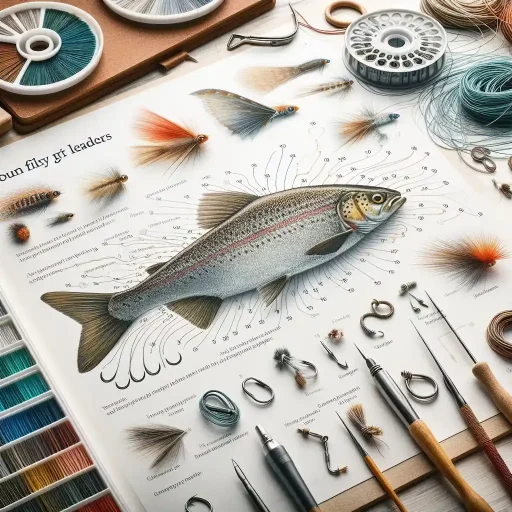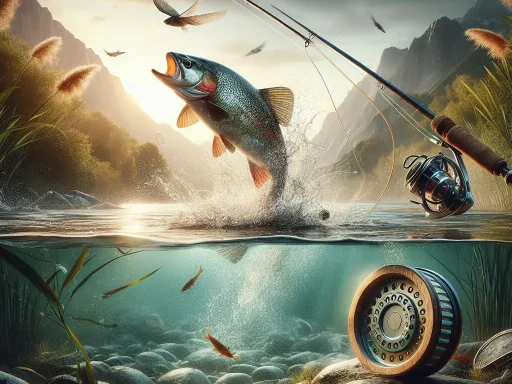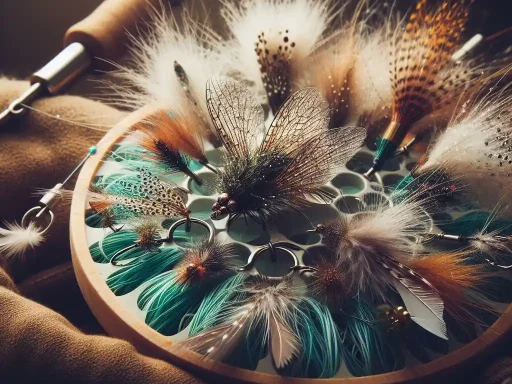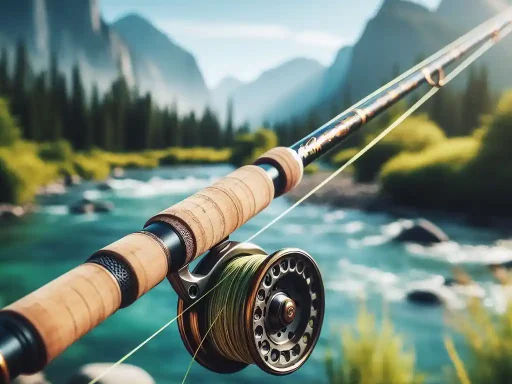Table of Contents Best Leader for Dry Fly Fishing
- Introduction
- Understanding Leaders
- Characteristics of an Ideal Dry Fly Leader
- Visibility and Buoyancy
- Turnover Ability: Landing Your Fly Gracefully
- Material Choices
- Nylon Monofilament Leaders
- Fluorocarbon Leaders
- Taper Design
- Level Taper
- Compound Taper
- Progressive Taper
- Length and Diameter
- Optimal Leader Length
- Diameter Matters
- Knots and Connections
- Improved Clinch Knot
- Blood Knot
- Leader Formulas
- Practical Tips for Dry Fly Leaders
- In Pursuit of the Perfect Leader
1. Introduction
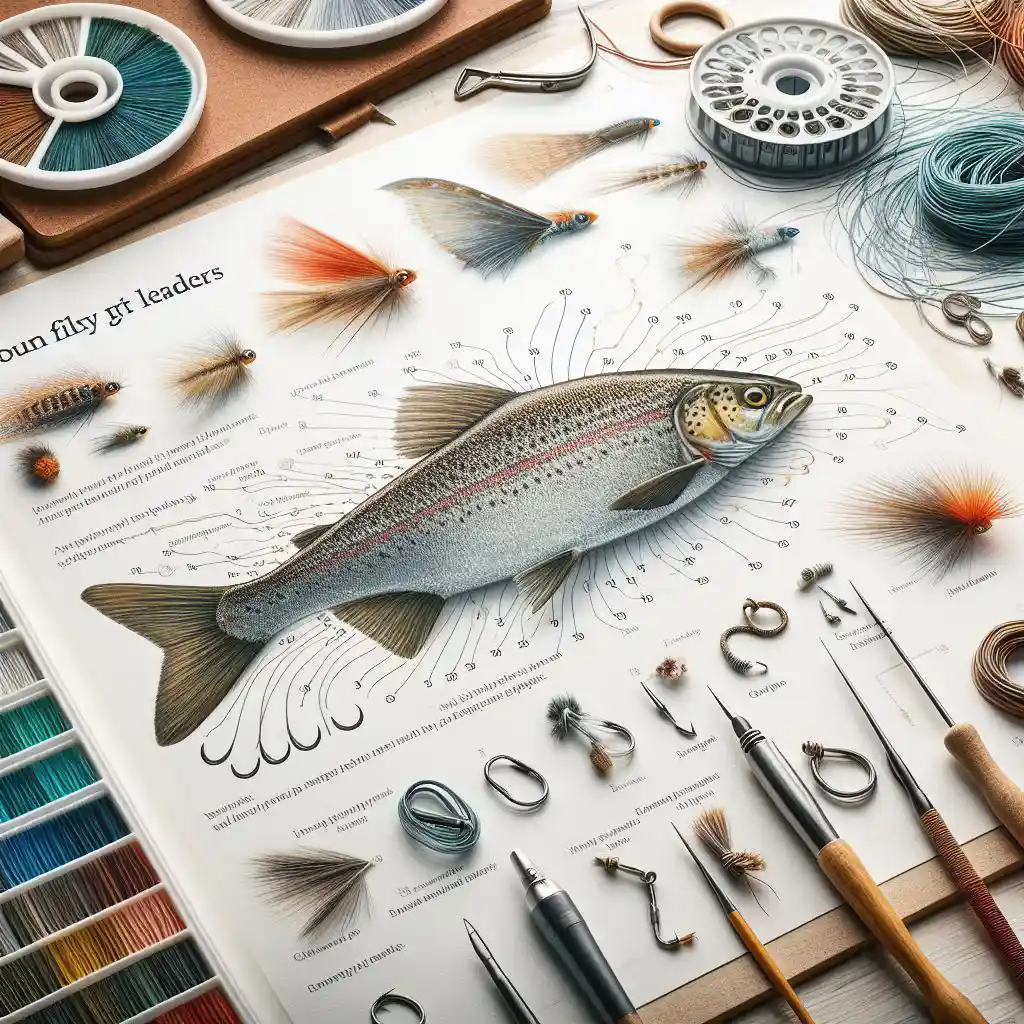
Dry fly fishing is an art that requires finesse, precision, and the right gear. In this comprehensive guide, we’ll delve into the world of dry fly leaders, exploring their characteristics, materials, taper designs, and practical tips. Whether you’re a seasoned angler or a curious beginner, understanding the nuances of leaders will elevate your dry fly fishing experience.
2. Understanding Leaders
Before we dive into the specifics, let’s clarify what a leader is in fly fishing. A leader serves as the crucial link between the fly line and the tippet. Its design significantly impacts casting accuracy, presentation, and overall success on the water.
3. Characteristics of an Ideal Dry Fly Leader
When it comes to dry fly fishing, the leader can make or break your presentation. Let’s explore the key attributes of an effective dry fly leader:
3.1 Visibility and Buoyancy
A leader should be highly visible to help track the fly’s movement. Opt for materials that stand out against the water’s surface. Additionally, buoyancy matters—your leader should float effortlessly to support delicate dry flies.
3.2 Turnover Ability
The leader’s ability to turn over the fly smoothly is essential. A well-designed leader ensures that your fly lands gently on the water, mimicking natural insect behavior.
4. Material Choices
Choosing the right material for your leader is crucial. Let’s compare nylon monofilament leaders with fluorocarbon leaders:
4.1 Nylon Monofilament Leaders
- Pros: Economical, forgiving, and excellent for beginners.
- Cons: Less durable, more visible to fish.
4.2 Fluorocarbon Leaders
- Pros: Low visibility, abrasion-resistant, and sinks quickly.
- Cons: Stiffer, less forgiving during casting.
5. Taper Design
Taper design influences how your fly lands on the water. Consider the following designs:
5.1 Level Taper
- Uniform thickness throughout the leader.
- Ideal for short casts and beginners.
5.2 Compound Taper
- Gradual thinning toward the tippet end.
- Balances turnover and delicacy.
5.3 Progressive Taper
- Gradual thickening toward the tippet end.
- Enhances turnover for longer casts.
6. Length and Diameter
Finding the sweet spot for leader length and diameter is essential:
6.1 Leader Length
- Optimal length: 9 feet for versatility.
- Adjust based on fishing conditions (e.g., tight streams vs. open rivers).
6.2 Diameter
- Thinner diameters offer delicacy.
- Thicker diameters provide better turnover.
7. Knots and Connections
Strong knots ensure seamless transitions between leader sections. Master these essential knots:
- Improved Clinch Knot: Attaches tippet to the leader.
- Blood Knot: Joins two leader sections.
8. Leader Formulas
Customizing your leader using formulas allows for versatility. Consider these examples:
- 9-foot 4X Leader: Ideal for general dry fly fishing.
- 7.5-foot 5X Leader: Perfect for delicate presentations.
9. Practical Tips for Dry Fly Leaders
Now that we’ve covered the theory, let’s dive into practical tips:
- Maintain Your Leader: Regularly check for abrasions and replace damaged sections.
- Handle with Care: Avoid unnecessary tugging or twisting.
- Adjust for Wind and Currents: Modify leader length and diameter as needed.
10. Wrapping Up: The Perfect Leader
The right leader can enhance your dry fly fishing experience. Experiment with different materials, tapers, and lengths to find your perfect match. Remember, it’s not just about catching fish—it’s about savoring the artistry of dry fly fishing.
FAQs
Q1: Can I use a nymph leader for dry fly fishing?
A: While nymph leaders are designed for subsurface fishing, they can work for dry flies in certain situations. However, opt for a leader with a longer tippet section to improve turnover.
Q2: Should I grease my dry fly leader?
A: Yes! Greasing the leader helps it float better, ensuring a natural presentation. Focus on the tippet section and the last few feet of the leader.
Q3: How often should I replace my leader?
A: It depends on usage and wear. Inspect your leader regularly, and replace it if you notice any nicks, fraying, or weakening.
Remember to expand on each section, provide examples, and weave in personal experiences or expert insights to create a comprehensive and engaging article. Happy writing!

